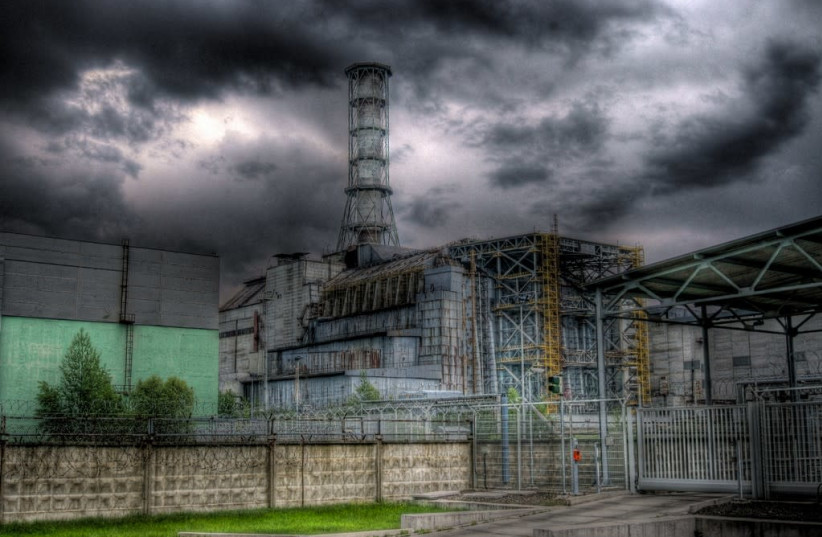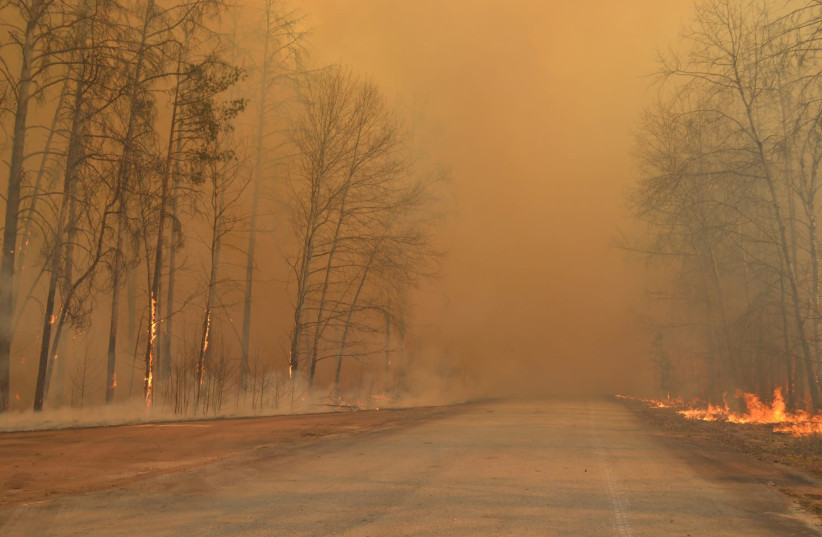Russian troops entered storage facilities and dug trenches in the irradiated Red Forest leading to radiation that will cause them to experience sickness, state-run nuclear agency Energoatom said.

Russian troops were exposed to high levels of radiation during their time occupying the Chernobyl nuclear power plant during the invasion of Ukraine, Ukrainian media reported citing the state-run nuclear agency Energoatom.
Russian troops seized control of Chernobyl on February 24, the first day of their invasion of Ukraine, before finally leaving the site at the very end of March. No Russian troops were present at the site as of April 1. During their time occupying the plant itself and the surrounding exclusion zone, Russian troops had entered storage facilities and dug trenches in the irradiated Red Forest. This, in turn, caused them to be exposed to severe radiation and spread irradiated dust around the site.
“They went to the Red Forest and brought radioactive material back with them on their shoes,” Ukrainian soldier Ihor Ugolkov told CNN. “Other places are fine, but radiation increased here because they were living here.”
“They went everywhere, and they also took some radioactive dust on them [when they left],” he added.
This exposure to radiation will cause Russian troops to begin experiencing radiation sickness, Energoatom said.

Further, the Russian soldiers also looted two research labs on the site that were studying radiation and radioactive materials, taking ionizing radiation and other irradiated materials, Interfax reported.
According to Energoatom, the soldiers stole and damaged 133 sources of radiation that can be compared to 700 kilograms of radioactive waste. Currently, the whereabouts of the stolen items is unknown.
Located some 30 kilometers from Kyiv, the Chernobyl nuclear power plant was host to the single worst nuclear disaster in history when in 1986 it experienced a catastrophic meltdown.
Centered near the city of Pripyat in what is now Ukraine, the disaster occurred after a safety test went wrong, making it unstable and leading to a chain reaction, exploding the reactor core. The nuclear cloud spread for around nine days throughout the region.
To this day, only one other nuclear disaster in history — the 2011 Fukushima disaster in Japan — is comparable, both being the only incidents to be rated the highest number, seven, on the International Nuclear Event Scale, though Japan’s then-prime minister Naoto Kan noted the disaster was different as it did not release as large of an amount of radiation, according to Reuters.
The exact death toll of the disaster is unknown, as while two people were killed in the original explosion itself, many more died throughout the following months from radiation poisoning and many more throughout the following years of cancer.
According to a 2006 article published in the academic journal Nature, the death toll in the USSR alone was estimated to reach around 4,000, while extending into Western Europe, that number could be even higher, with some studies ranging from 16,000 to even 60,000.
But while the disaster itself is long gone, the damage continues to this day. As noted by Nature, many areas around the reactor and beyond are still affected by the radiation.
The most prevalent type of radioactive isotope in the disaster, cesium-137, has a half-life of around 30 years, so much of the areas left abandoned by the blast could get better in the coming years, but many areas could be radioactive for centuries to come, as the 30-kilometer exclusion zone around the reactor itself.

However, the situation is now worse because Russian troops moved around the area so much, causing dust to spread and levels to rise. The 10 square kilometer Red Forest, already one of the most radioactive locations on Earth, has now seen “abnormally high” levels of radiation, according to Energoatom.
As reported by The Jerusalem Post
